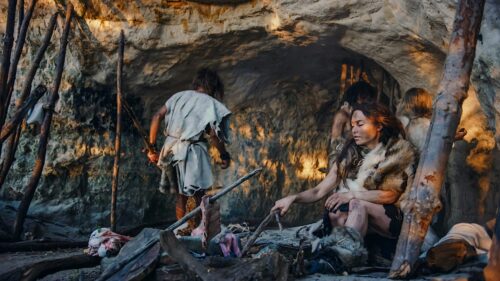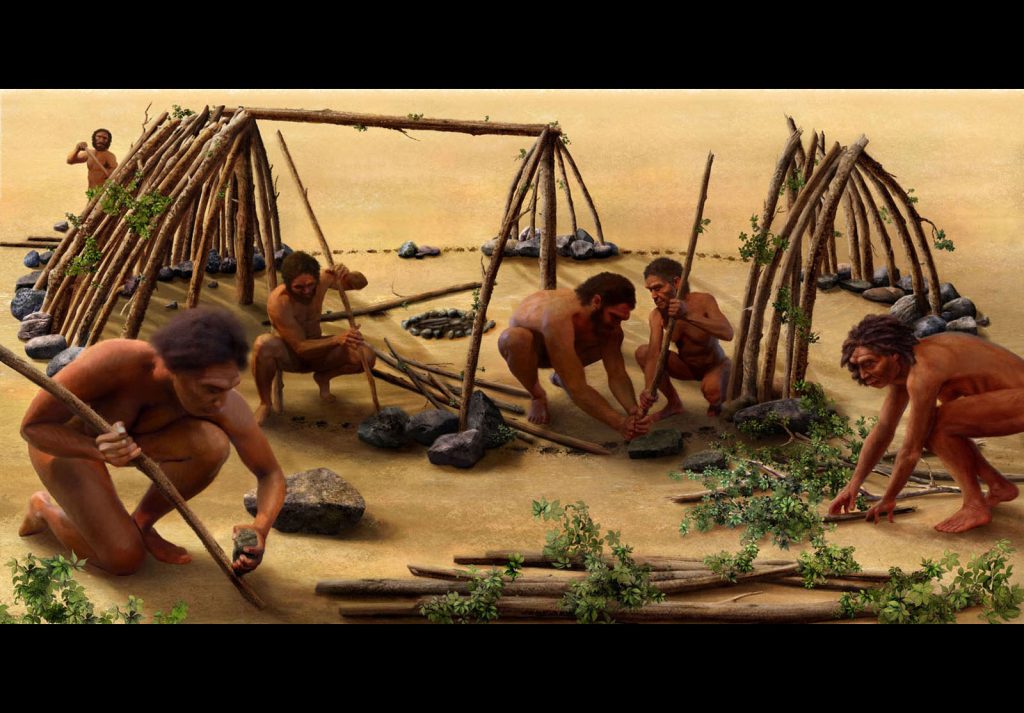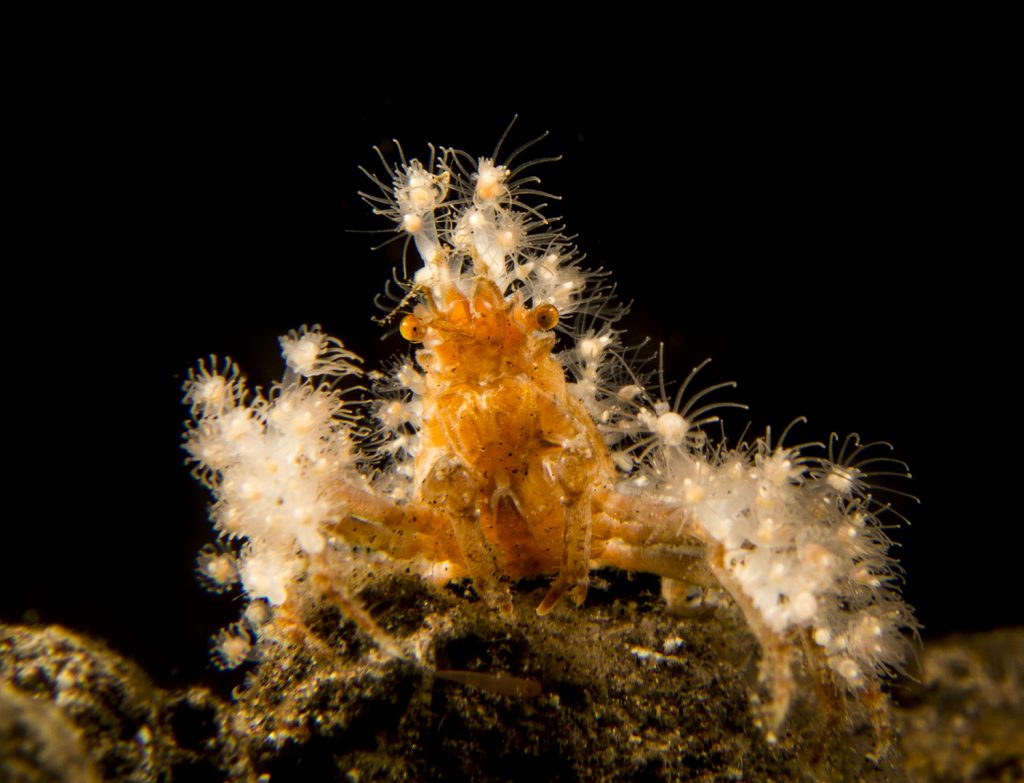The Domesticated Hominin
“I do not think any spectacle can be more interesting, than the first sight of Man in his primitive wildness.”
—Charles Darwin, letter to J.S. Henslow, April 11, 1833
March 3 was World Wildlife Day, and that got me thinking: Are humans still “wild”? If not, when were human ancestors no longer “wildlife”? In other words, what event or transition in human evolutionary history marks the “domestication” of hominins?
TOOL USE
An instinctual response to this question might be “the use or manufacture of tools.” Briana Pobiner’s recent SAPIENS article, “The First Butchers,” discusses evidence of tool use and manufacturing by various hominin species over the last 3.3 million years. Pobiner also addresses tool use by living nonhuman primate species, such as chimpanzees cracking open nuts with stones. If animals living in the wild today are using tools, then tool use by human ancestors wouldn’t necessarily mark a transition away from being “wildlife.”
What about toolmaking? Chimpanzees do not intentionally make complex stone tools, as Plio-Pleistocene hominins did. But they do prepare branches and stems to use as hunting spears and termite-fishing rods, respectively. So again, if we consider modern chimpanzees to be wildlife, then the earliest toolmaking hominins would be too, would they not?
SHELTER BUILDING
What about the ability to come in from the cold, so to speak?
Consider the behavior of altering one’s environment to build a shelter. That might strike you as a not-so-wild thing to do. Currently, the oldest evidence of hominin shelter building is located in France and dates to about 400,000 years ago. Could this mark a transition to domestic life for human ancestors?
Well, other organisms build structures that could be considered shelters. A diversity of animals create burrows with “shelters” over the opening; beavers get cozy inside their dams; arthropods, birds, rodents, fish, primates, and other critters build nests; and there are even leaf-shelter-building caterpillars and tent-making bats. Perhaps shelter building isn’t the answer we’re looking for.
DECORATION
At least 100,000 years ago, hominins began modifying resources from their environment for decoration—as personal ornaments. In some cases, this human behavior may be considered nonadaptive, meaning individuals don’t adorn themselves to attract potential mates or send a message to competitors—they do it just because.
Do wild animals behave this way? Sarah Berke and colleagues define a decorator as “any animal that actively attaches foreign material to itself or to its biogenic structure,” and there are in fact plenty of wild animals that do this. Many of them, though, decorate to protect themselves from predators, pathogens, or parasites, or to signal their status. All of these count as adaptive behaviors, since they are used to secure an advantage over competitors.
The caterpillar Uraba lugens wears a protective hat made of its old, molted heads. Crabs of the superfamily Majoidea are well-studied for their decorative camouflage and other anti-predator decorating behaviors. Some insect larvae wear shields of feces or molted body parts for protection. So are hominins the only animals to adorn themselves for reasons that may not be adaptive?
Once again, Homo sapiens’ closest living relatives, chimpanzees, show that even the most seemingly non-wild human behavior is not unique—by putting grass in their ears, just because.
FIRE
Humans have a unique relationship with fire. At least 800,000 years ago, if not 1 million years ago, human ancestors had control over fire. Regular use of fire is evident in the archaeological record by 500,000 years ago. Hominins certainly used fire for light, warmth, and protection from predators.
Anthropologists think the controlled use of fire led to significant evolutionary outcomes, including cultural shifts as well as changes in the shape and function of the hominin body. Certainly, some of the major changes to human behavior and form resulted from cooking. Physical changes over time—to the gut, face, and brain, in particular—were influenced by the processing and ingestion of cooked foods. And researchers suggest that fire’s light may have even affected sleep-wake patterns and therefore hominins’ hormonally controlled body rhythms.
Is the control of fire what sets hominins apart from wild animals? Are the burned bones and plants found at nearly 1-million-year-old sites a sign of the emergence of the domesticated hominin?
When scientists consider the process of domesticating plants and animals, they think of artificial selection—for example, crossbreeding of plants, directed mating of animals, or culling—and the desired evolutionary outcomes of those activities. The regular, controlled use of fire by hominins has evolutionary consequences; could this behavior be an unconscious form of artificial selection of hominins by hominins—in other words, selection without wish or expectation of change that inevitably alters the population?
What do you think? Are humans still wild?



































